Distinguishing fiction from reality is hard at times. Legends, ancient or urban, drop into the everyday vernacular, creating expectations. Many places on earth become famous for the legends from which they are born. But how many of these places don’t exist?
As time passes, the myth becomes inseparable from the truth. Especially when there’s a seed of reality planted within the myth. King Arthur, for example, was a British king, but the legends about his rule are mostly myths.
So, the question becomes, which famous places are myths and which are real?
Let’s take a look at some of the most famous places that don’t exist.
Ong’s Hat
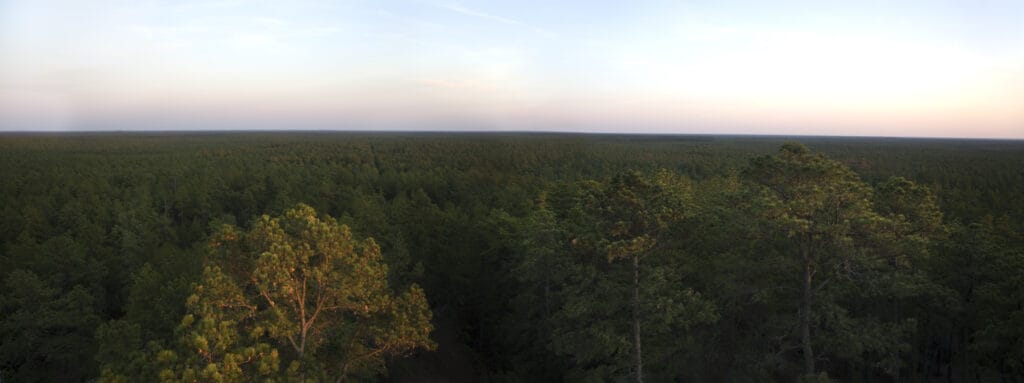
What may be left of Ong’s Hat (Hut) would be found in the forest of New Jersey. Chances are, though, that nothing left of the ruins exists. The fictional place certainly doesn’t leave behind ruins and ranks as one of the most interesting places that don’t exist by legend alone.
©iStock.com/Terryfic3D
Tucked into the Pine Barrens of New Jersey, Ong’s Hat may be found on actual maps from the early days of the region. The small town finds naming on maps but most likely, it was merely the site where Ong (presumed a farmer) parked in a hut (Ong’s hut) on regular long journeys to and from market. As late as the 1930s, Ong’s Hat appeared on maps but nothing could be done to prove the place ever existed, save finding the ruins of one single hut in the middle of the forest.
It wasn’t until the 1980s when strange tales emerged on various bullet board services and magazines of conspiracy theorists that people thought about the place again. The publications detailed elaborate conspiracies involving mystics and scientists breaking through to another realm via Ong’s Hat. The tales arose from the novel “Incunabula Papers: Ong’s Hat and Other Gateways to New Dimensions.” Author Joseph Matheny probably didn’t anticipate his fictional tales would lead to theorists believing every word until the 2000s, seeking answers of the “truth.”
If you find one of the outdated maps from the 1930s or earlier, you may well be able to pop over to the ruins with your drone. Or visit Google and find the Ong’s Hat Parking area at the Batona Trail and hike out.
Listenbourg
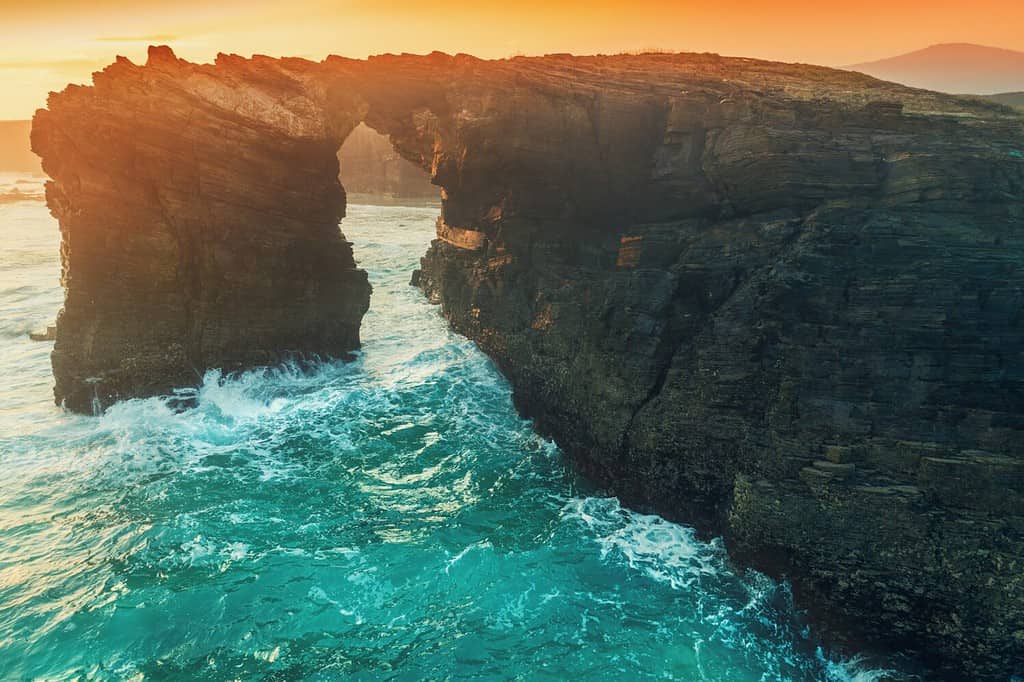
Roughly situated on the coast of Spain and Portugal, Listenbourg boasts of… Well, nothing. The internet-legend is among the places that don’t exist.
©vvvita/Shutterstock.com
If you’ve seen anything floating around on Twitter about the nation of Listenbourg, you’re among thousands of others. On October 30, 2022, Gaspardo, a Twitter user, posted the first instance found on this fictional country. The post included a map of Europe with the caption “I’m sure that Americans don’t even know the name of this country.” Many clicked the link to learn all about the long history, politics, national anthem, airline, sports teams, and more.
However, the “nation” came into imaginary existence that day, when Gaspardo attached a landmass on the map to the borders of Spain and Portugal, forming a bay and obliterating the English Channel. Many folks, as it turns out, didn’t know the name of the country and so had to look it up. When they did so, they discovered the websites for the Ministry of Interior and official government page.
Since the landmass doesn’t actually exist, the closest you can get to visiting is hitting up the northwestern coast of Spain and the coast of Portugal.
Camelot
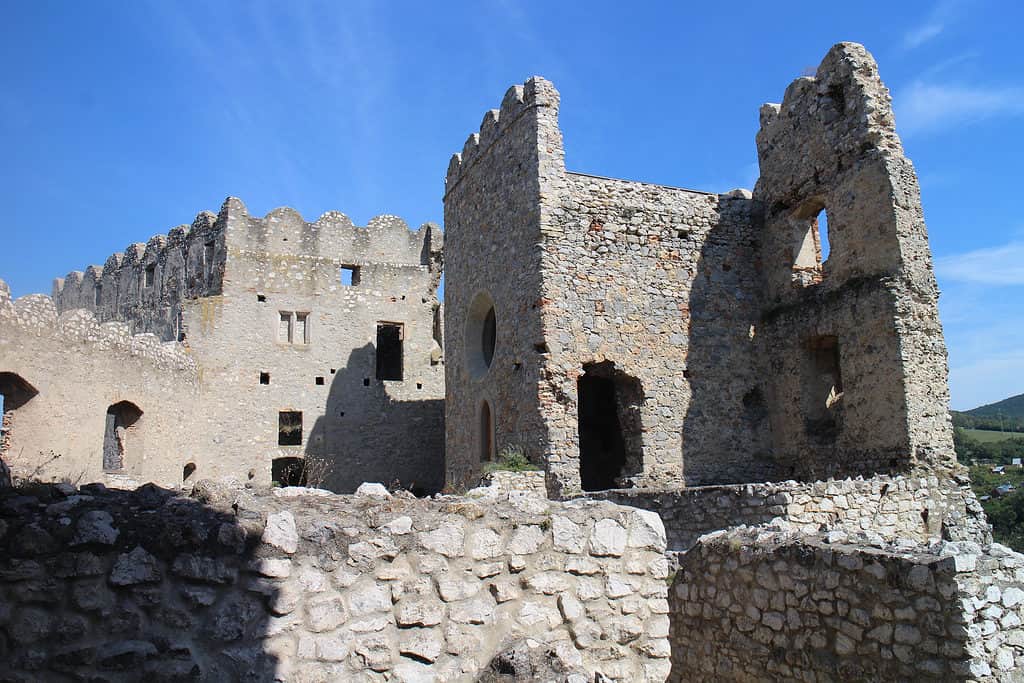
You won’t find Camelot on any map, even the ancient ones. It sadly never existed.
©P.Fabian/Shutterstock.com
Arthurian legend lovers may find this fictional place most disappointing of all. While there was likely an ancient king in Britain named Arthur who fought off Anglo-Saxon invasions, the iconic medieval monarch and his Round Table of Knights didn’t exist. That character is an amalgamation of various characters from history, blurred into magical fantasy tales of wizards and enchanting sorceresses of the deep.
According to researchers, the mythical home city of Arthur, a castled city of the 400s or 500s, depending, should have been located in Great Britain somewhere. The exact location suggested by myths and legends varies greatly, so folks who wish to “visit” Camelot would need to wander the countryside, visiting ancient ruins. Sadly, Camelot doesn’t literally exist.
The Isle of Demons
Dark fiction and legend lovers know the name “The Isle of Demons.” The name itself evokes any number of ideas for novels, historical past moments, or TV settings. And beginning in the 1500s, the name appeared on real-life maps created by cartographers of the North American region. The precise location puts the ominously named island in close proximity to Labrador and Newfoundland.
The moniker was granted to the island as the place was believed to house ship-attacking monsters from another realm. Legends spread to seafarers, warning them off passage nearby the supposed island. Real-life famous residents were accredited with living there, too, with the beasts.
Marguerite de La Rocque, for example, a noblewoman in 1542, supposedly traveled to a Canadian colony and engaged in an affair with explorer Andre Theyet. Because of the impropriety, the woman, along with her maid and the explorer, was put off ships by the lady’s uncle. Supposedly, they took up residence there on the Isle of Demons, where she gave birth to their child. The sailor and child passed, but she survived and subsisted by hunting wild game for two years before being rescued.
While the story likely finds its base in reality, the Isle of Demons doesn’t actually exist. More likely, the lady and company were marooned on Quipon Island instead.
The island was removed from maps in the 1800s as one of the places that don’t exist. But if you’re curious to visit this monstrous place for some fantasy writing fiction, you may well wish to book a tour to the northeastern region of Canada to see where it would exist.
The Bermuda Triangle
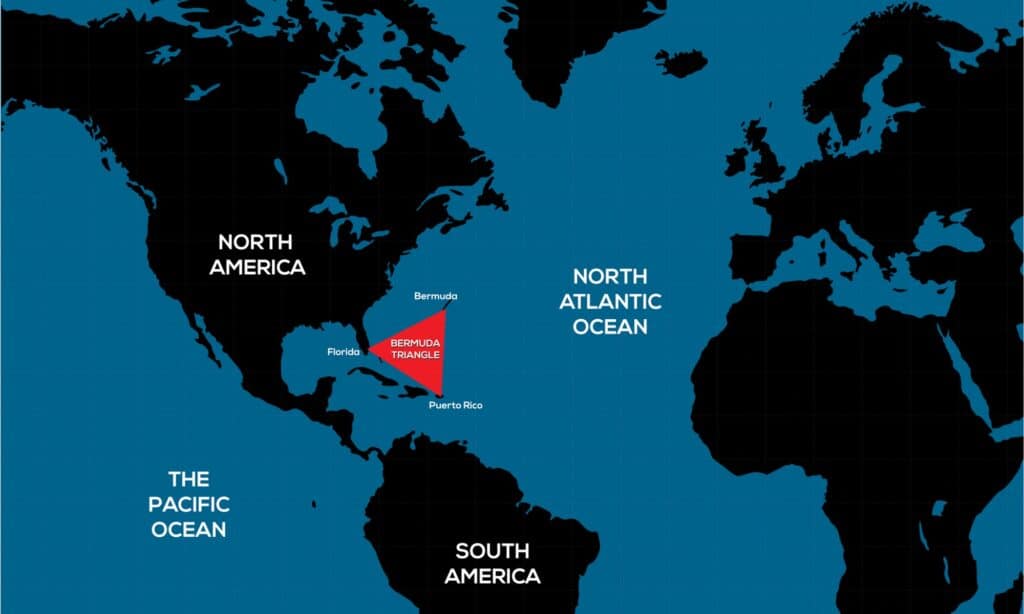
The Bermuda Triangle has been frightening seafarers and pilots for decades. But, it turns out, it doesn’t really exist. At least not like you’d think. So, technically it’s there, but in the face of reality, it qualifies as one of the famous places that don’t exist.
©iStock.com/GEMINI PRO STUDIO
Technically, the Bermuda Triangle does exist, as a loosely defined portion of the North Atlantic. The three corners roughly draw a triangle between Miami, Florida, Puerto Rico, and Bermuda. What lands the location on this list of fictional places on Earth is the intensive mythology behind the location which effectively makes it a fake place.
The mysteries behind the Triangle have perturbed and frightened travelers for many years — dating back to the first known legend from Christopher Columbus. He claimed to see a flare in the area during his passage through. Scientists suspect what he saw was merely a heavenly body falling to earth. Other myths and legends have involved a U.S. Navy Bomber squadron’s disappearance, ships sinking without warning (often disappearing from communication), and many others.
However, no evidence exists to support the supernatural, bizarre, or mythological powers of the Triangle. Thousands — even millions –—of others pass through the area with no issue whatsoever. Experts find no evidence for the area possessing the “powers” suggested by these legends, not even specialized magnetic pull. So, the location is treated by scientists and experts as just another place on Earth.
Gotham City
While one of the nicknames of New York City may be Gotham, and Batman films were tweaked to give an impression that maybe, just maybe, it was really filmed there, Gotham City just doesn’t exist. All the TV shows, films, books, comic books, and more use this fictional city as the home base for superheroes and terrifying villains. In the original content, with some allusions left in now, Gotham City should actually exist in New Jersey, despite the Big Apple’s influence on the vibe of the fictional city.
If you want to visit “Gotham” you can actually find filming locations around Chicago, London, and Hong Kong. Be sure to look up as you walk downtown in Chicago, though, or you’ll miss one of the most iconic pieces in the films.
Wakanda
A fictional superhero city we thought wouldn’t make the list happens to be a more recently known place: Wakanda, Africa. Some teachers have noted that students have asked why they weren’t learning about the city of the Black Panther, though. So, the nation tucked away into the most secure part of the planet makes the list.
If Wakanda were real, it would find itself lying on the border between Uganda and Tanzania, along the shores of Lake Victoria. If you want to visit, you can make your way to Bukoba, the “Golden City” which offers a small museum of tribal artifacts, tours, and ancient cave drawings. Plus, if you’re thrilled by the idea of Vibranium, you can make your way to the 2,500-year-old furnace of Katuruka, the oldest iron-smelting furnace in southern Africa.
Genovia
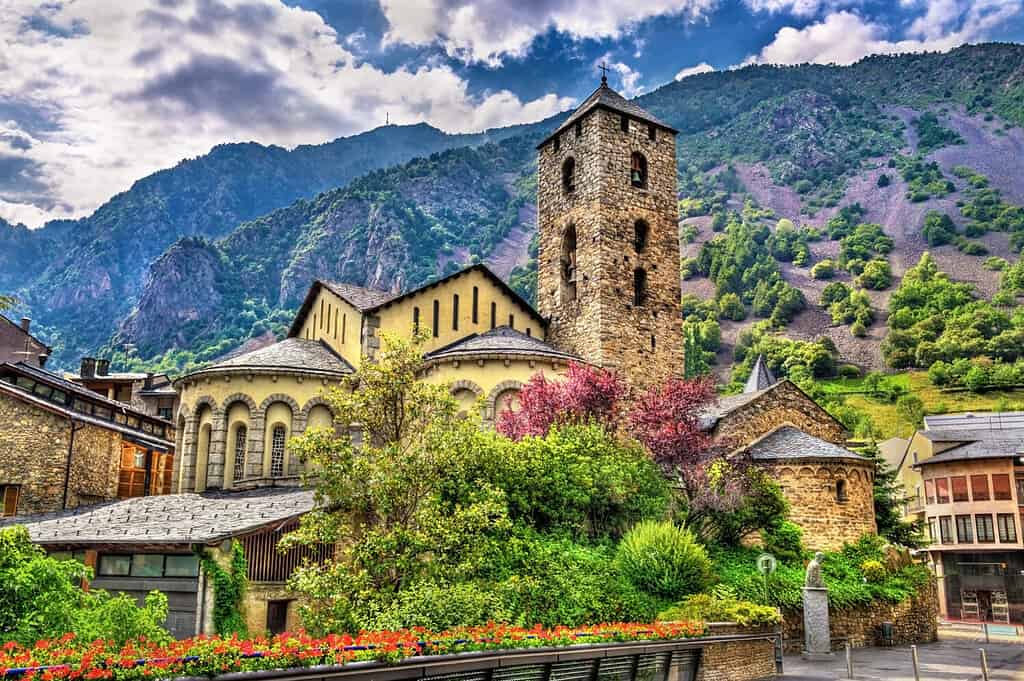
You won’t find Princess Mia’s castle and homeland on any map. Sadly, Genovia, where Anne Hathaway and Julie Andrews rule, doesn’t really exist.
©Leonid Andronov/Shutterstock.com
If you had to look the nation of Genovia up when Princess Diaries came out, you aren’t alone. The creators of the story did an excellent job of creating believability.
In real life, the country most closely resembles the real-life tiny nation of Andorra. The real country borders France and Spain and takes up just 180.6 square miles. The whole country has only 70,000 citizens, much like the fictional country in which Mia Thermopolis claims the throne.
If you want the real-life experience of visiting such a beautiful nation, you’ll have to fly into either France or Spain, as they don’t have an airport. Then, hop aboard a train from Barcelona or Toulouse.
Poyais
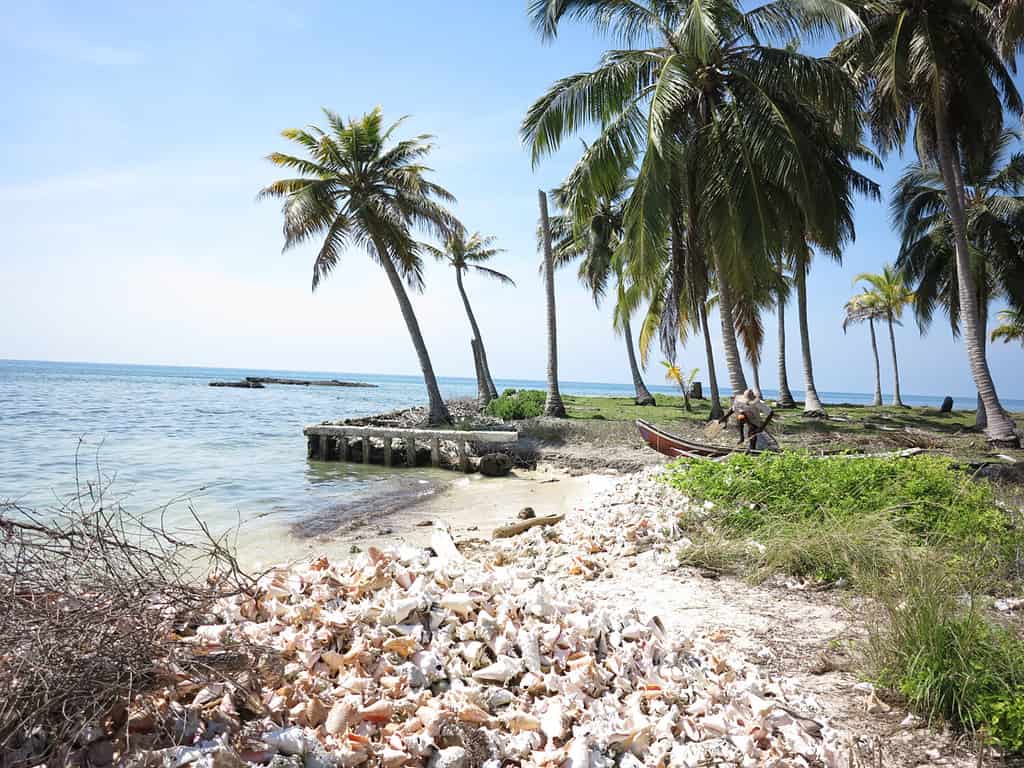
Believers in General Gregor MacGregor thought they’d land in a tropical paradise for their new homes. Instead, they landed on Mosquito Coastline to face malaria and death.
©Stephen Peterson/Shutterstock.com
Scottish hero and adventurer, General Gregor MacGregor Scotland, left behind the British army to find his way into legend. His fame comes from one of the biggest scams of all time – a nation invented and “ruled” by McGregor.
In 1810, MacGregor left his life as a military man, and by 1821 he’d created the nation of Poyais. The problem was, Poyais wasn’t real. But he’d already convinced several banks, wealthy individuals, and even some European government bodies that he’d created this new nation in South America. The title he chose, “His Serene Highness Gregor I, Cazique of Poyais” only increased the legend. Londoners, in hordes, paid for land in the new nation, seeking a stable democracy and rich soil for harvest.
Actual land existed but was tucked into the jungle along the Mosquito Coast. One year later, in 1822, settlers set sail for Poyais only to find an uninhabitable jungle. Believing their compasses off, they sent the captain ashore to find the right location. A second shipload of passengers landed soon thereafter. Mosquito-borne diseases and hurricanes striking left them stranded or worse. Another year later, the survivors were finally rescued and returned to London.
MacGregor tried the scam again in France a few years later, fooling more folks but not to the point of death. He eventually retired on his ill-begotten fortune to Venezuela, never facing prison time or other official consequences for creating and selling this fictitious nation.
El Dorado
The Lost City of Gold, or El Dorado, finds home in many legends (and animated films), deep within the jungles of South America. The lost city has drawn seekers of gold, adventurers, and adventurers of all types for centuries, dating back to prior to the conquest of the Aztec and Inca peoples. The legend finds home among the Muisca Confederation, however, a people far less known. The Muisca lived in the highlands of Cundinamarca and Boyaca in Colombia and are believed to be more technologically advanced than either the Inca or Aztec peoples.
Mnya the Gold (or color of gold), represented energy contained within their supreme triune god, Chiminigagua, creator of all. Thus, the golden city was dedicated to the gods of their people.
The earliest known reference to El Dorado-esque kingdoms goes back to 1531 when an expedition team heard of “Meta” a mountainous city on the Orinoco River. Meta supposedly overflowed with gold. The legends grew as the years passed, with more references to these mythical golden cities in the Amazon. Many adventurers seeking their fortunes faced significant difficulties and death as they suffered from gold fever.
Interestingly, the name originated as El Hombre Dorado (the golden man) or El Rey Dorado (the golden king) and didn’t reference a city at all. But, like all good myths, the stories morphed, bloomed, and grew into the legendary city of gold we know today.
The likelihood of such a city existing is nearly nil, though, of course, as long as gold is valued highly in trade, people may continue seeking the lost city.
If you want to seek the city yourself, visit Colombia and experience the historical museums, cultural offerings, and galleries.
Shangri La

Shangri La finds its home in the myths and legends around the great
Himalayan
mountains. Sadly, the idyllic paradise does not exist.
©iStock.com/RNMitra
Many dream of a utopian paradise, like that of Shangri La. And though many places have adopted the name provided by novelist, James Hamilton, in his novel “Lost Horizon,” Shangri La isn’t real. The magically peaceful place in the Himalayan mountains is thought to be an earthly heaven, isolated from the rest of the world. The residents, happy, long-living, and peaceful, almost seem immortal.
Sounds ideal, right? Well, sadly, like all utopias, something’s missing. In this case, it’s reality.
The idea for this stunning paradise originated from the Buddhist mystical kingdom of Shambhala. Now, you’ll find it in pop culture everywhere, including other novels, films, and TV shows. One region in China, even, has adopted the title, in the Yunnan Province. The vast area welcomes throngs of tourists and local visitors all year long and may well be your best bet for finding your own Shangri La.
Atlantis
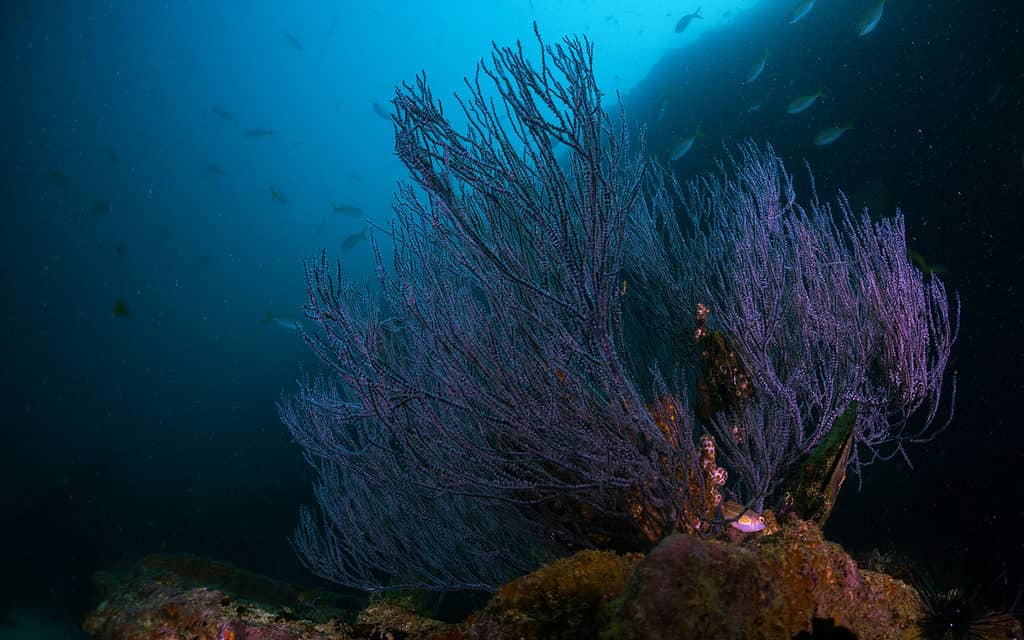
If it did exist, Atlantis would be home to coral, fish, and deep sea creatures, not mermaids. But Plato made up the sunken nation as a metaphor for hubris, not a historical fact. Sadly, this magical world ranks among one of the most famous places that don’t exist.
©Bangtalay/Shutterstock.com
You might not know this, but Plato first told us of Atlantis. The arrogant island nation, run afoul of the gods, sank beneath the waves, and birthed into legend. Suggested locations of the incredible nation of the deep include coastal spots around Spain, Cyprus, Turkey, parts of Africa, or even Antarctica. Sadly, no evidence that the island nation ever existed has been found.
The sunken nation, still inhabited in some stories, abandoned and reclaimed by coral, has made its way into literally thousands of tales.
If you want to visit somewhere similar, most folks suggest the Greek islands for the culture, beauty, and breathtaking landscape, and sea views you’re craving from the legends of Atlantis.
The photo featured at the top of this post is © iStock.com/GEMINI PRO STUDIO
Thank you for reading! Have some feedback for us? Contact the AZ Animals editorial team.







